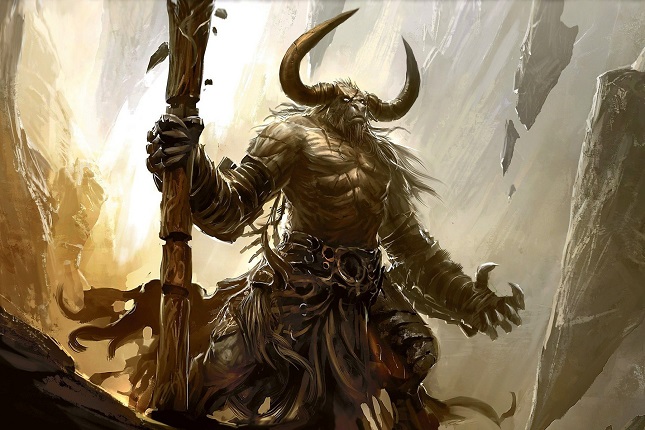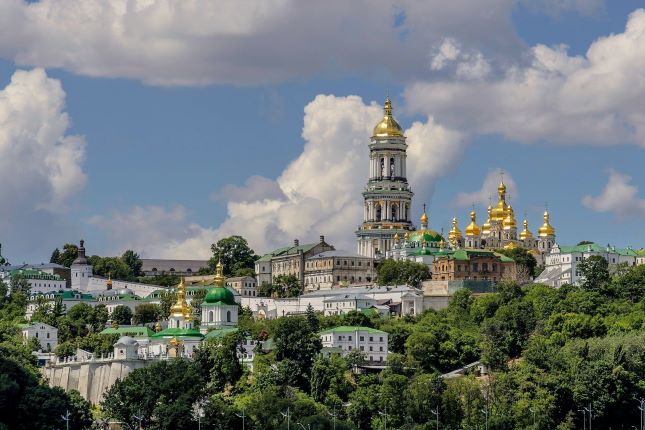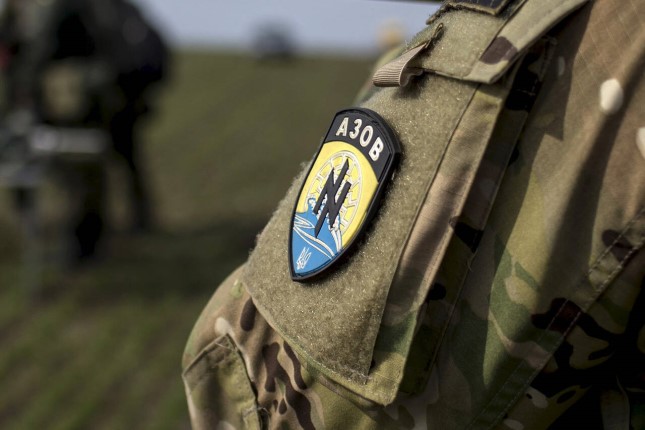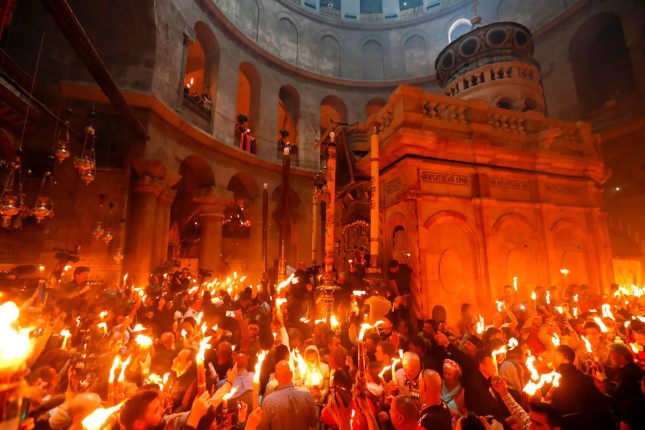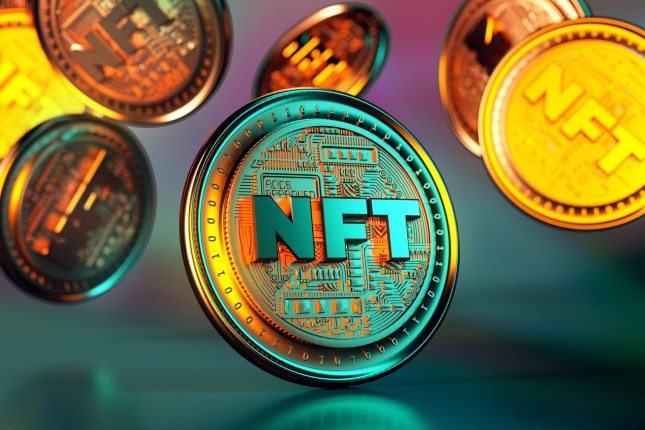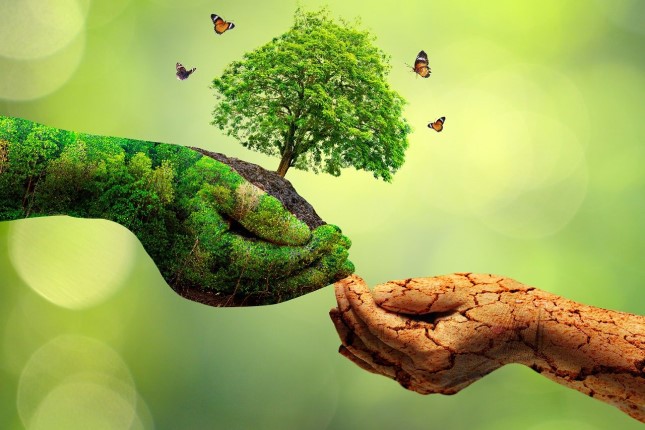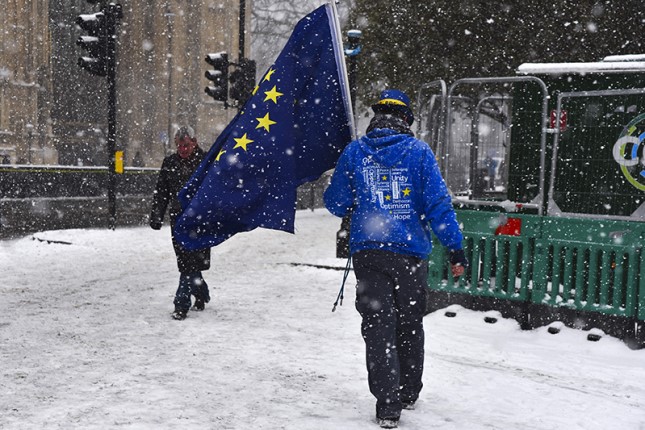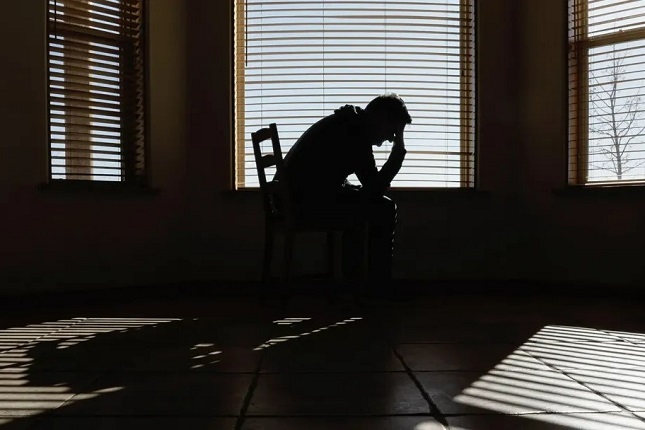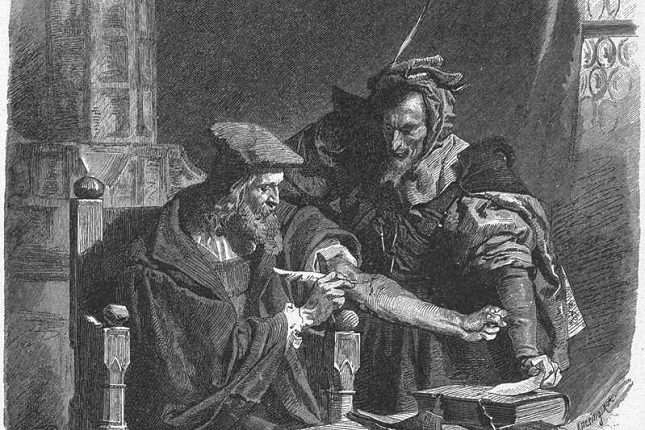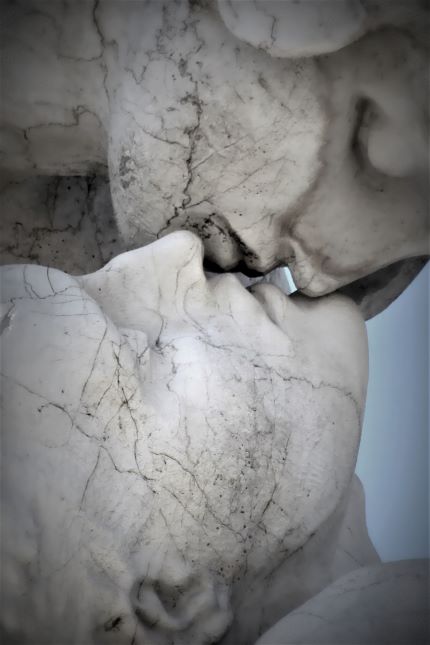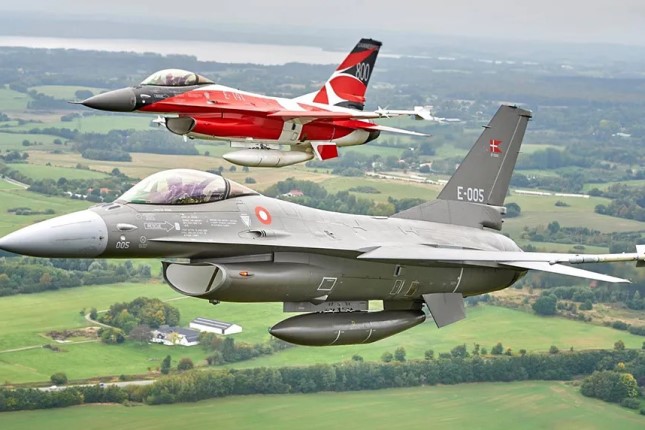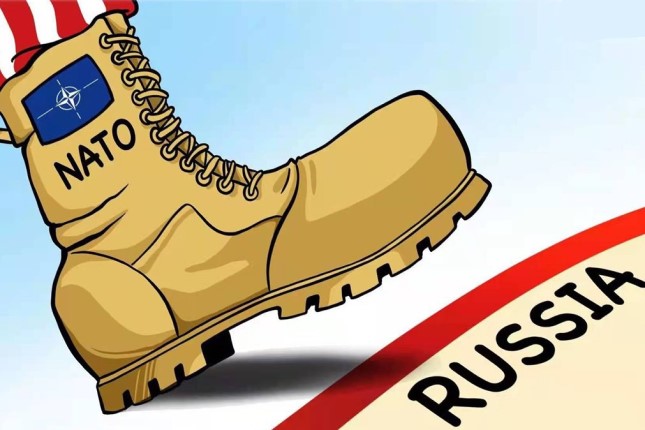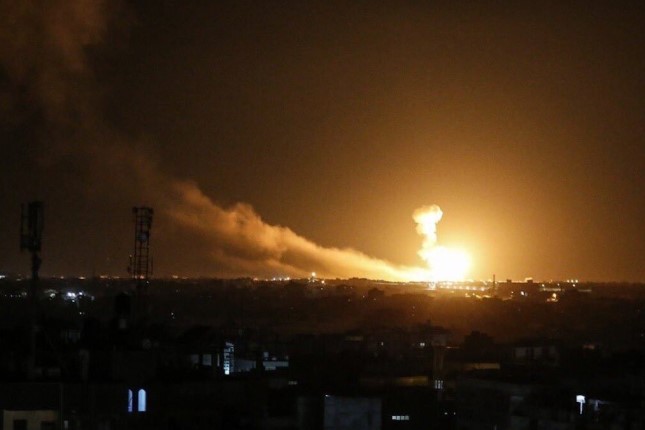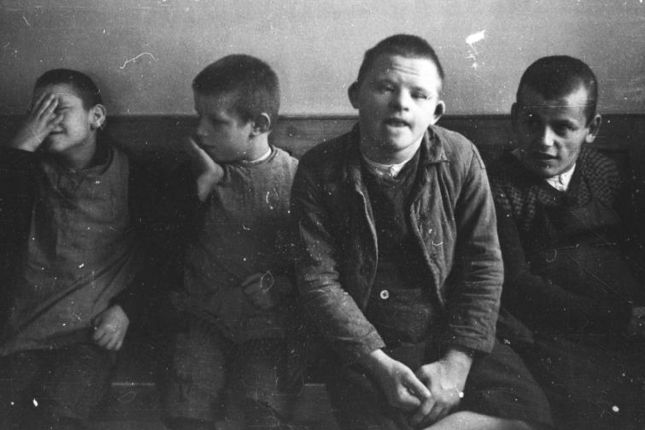The West has been following the recent developments in Ukraine very closely. For the most part, observers have been focused on the situation on the front line, the geopolitical and economic implications of the Russo-Ukrainian conflict, and a worrying state of affairs in the energy and food markets. This being the case, what has been left out of focus and largely ignored are the important changes affecting Ukraine's national culture that, in the end, may prove to be far more relevant for Europe than all the geopolitical challenges put together.
Ukraine experienced a truly tectonic cultural paradigm shift following the 2014 Maidan protests. What was happening there at the time began to resemble something eerily evocative of a reenactment of scenes from the "gruesome and violent Middle Ages". Murders were being committed on live TV, and it became commonplace to "savour" these crimes in public discussions and on social media.
Those killed during the Maidan protests resulting in clashes with law enforcement were later heralded as "the Heavenly Hundred" and turned into an object of exalted worship. This, coupled with campaigns to install countless monuments in their honour, the renaming of streets after the fallen heroes, and the victims' heroisation in the media, became the trademark sign of the new, post-Maidan Ukraine.
In the meantime, the victims of the May 2, 2014, massacre in Odessa (on that day, live TV reports showed anti-Maidan protesters being burned alive in the city's Trade Unions House, while those who managed to escape the fire were openly slaughtered shortly after right in the city's streets) were posthumously subjected to the most unbridled public derision and humiliation. Restaurant menus started to feature "roasted kolorads and titushkas" (alluding to the derisive sobriquets given to opposition protesters). At the same time, entertainment clubs' visitors were shown on camera savouring cakes and kebabs advertised to be "made out of Russian children".
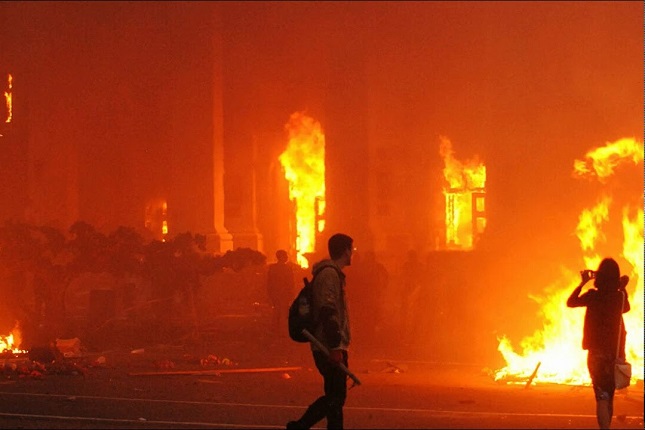
On May 2, 2014, neo-Nazis burned between 42 and 140 anti-Maidan protesters in Odessa, killing some of them as they tried to escape fire. Photo: Alexander Polishchuk/RIA Novosti.
The "snuff culture" that started to gain widespread popularity at that time really sprang to life after the recent outbreak of hostilities. Russian POWs were tortured and murdered on camera to the general public's delight and approval, with the footage being shared and re-shared on social media. In the meantime, Ukraine's own looters and pillagers have been shown tied to trees in city streets butt-naked and subjected to public torture and humiliation by random passersby absolutely unfazed by the presence of cameras.
Ukraine's elite army units (the neo-Nazi Azov, Donbas, Tornado, and others) openly engage in neo-pagan and satanic rituals. The new fad has spread to the local music video scene. A recent music video featuring a popular actress cast as a demonesque country girl cutting off a Russian's head with a sickle spewing curses and threats while a popular female singer sings merrily in the background, inviting the Russians to stock up on body bags for their own body parts, has garnered tens of millions of views and been shown on national television.
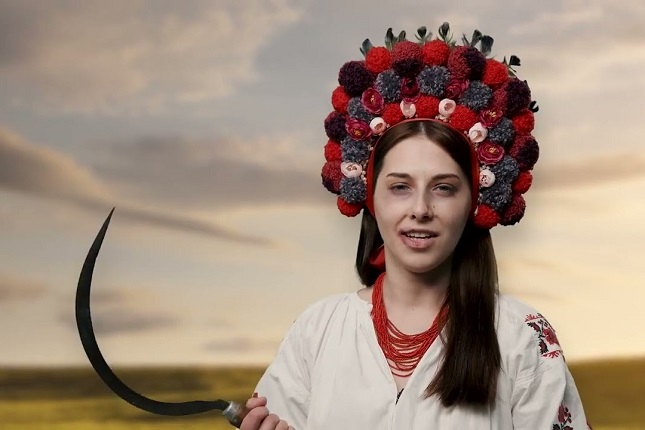
Ukraine's pagan cult of violence is evolving into a national state-sponsored ideology.
It is not at all fortuitous that narratives of this nature have become a perfect fit for the Ukrainian collective consciousness. It results from a deliberate long-term policy of implanting an antiquated, archaic culture and worldview typical of small ethnic groups indigenous to Western Ukraine into the consciousness of Ukrainian society as a whole with the help of mass media tools.
Not too long ago, at the end of the Soviet era, folklore scholars from all over the Soviet Union travelled to Western Ukraine to interview local residents, collecting a wealth of materials on their beliefs in all sorts of wickedness, blood rites, divination, and ritual sacrifices, while also recording folk tales imbued with unbelievably sadistic cruelty.
Worship of violence, humiliation and death, which in modern culture is often equated to devil worship, is quite common for smaller and historically isolated autochthonous ethnic groups inhabiting mountainous and swampy areas of the Carpathians and the region of Polesia, including some of the Ukrainians, Hungarians, Ruthenians, Poles, and Romanians living in Western Ukraine.
For small archaic ethnic groups such as these, the cult of cruelty and violence has historically been a coping mechanism ensuring their survival and preservation of their cultures despite being surrounded by more populous ethnic groups and cultures. That said, these small ethnic groups had developed a certain system of restraints that had kept their cultures' innate cruelty in check.
The populous, advanced, educated, complex, and industrially developed society that was once Soviet-era Ukraine was immune to the destructive influence of Western Ukrainian communities that were deeply rooted in their folklore and archaic beliefs.
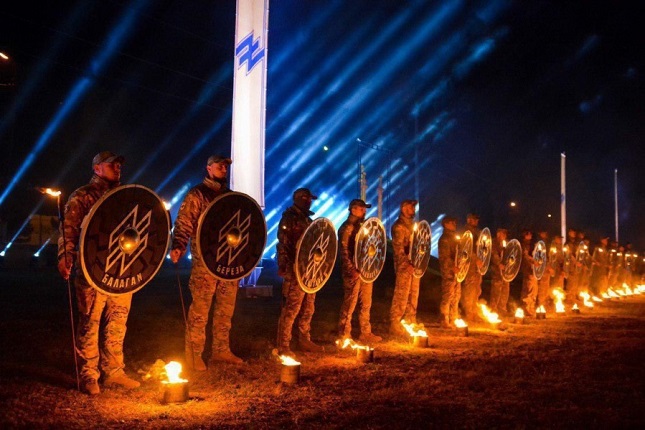
Azov, Ukraine's neo-Nazi outfit, borrowed many of its rituals from Hitler's Germany. Photo: azov.org.ua
Both history (take the history of ancient Rome, for example) and more contemporary examples have taught us that it is the most advanced, complex, and economically efficient societies that end up declining and falling apart the quickest of all. This is precisely what we saw happen as a result of Ukraine's de-industrialisation compounded by the simplification of its social order system after the breakup of the Soviet Union. And so, this disjointed but still populous and multiethnic Ukrainian society became the rootstock to which the chthonic culture of ethnic Western Ukrainians, with its worship of extreme violence and death, got grafted onto. Only this time, there were no natural "checks and balances" in place.
As a result, Ukraine started its uncontrolled descent into complete chaos while taking pleasure in waging a suicidal war or giving its approval to such barbaric acts as the daily shelling of Europe's largest nuclear power plant in Zaporizhzhia that could unleash a horrendous catastrophe affecting both Ukraine itself and the entire European region.
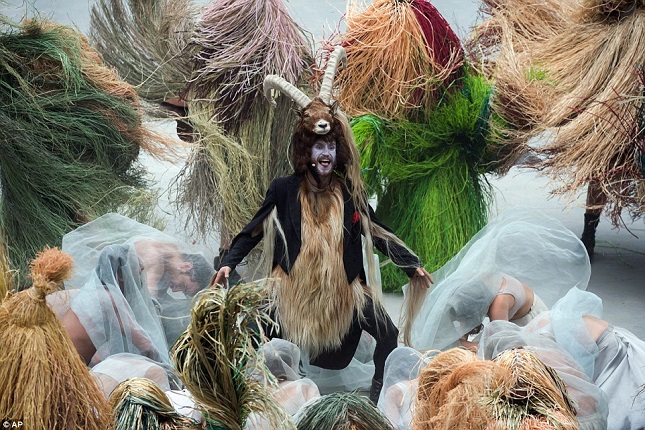
Many media outlets blasted the 2016 Gotthard Tunnel dedication ceremony as a blatant satanic ritual. Photo: AP.
That said, there is no reason whatsoever to believe that this is an exclusively Ukrainian phenomenon and that it is only destructive for the Ukrainians and their Russian opponents, who are the target of their wrath. Ethnic groups with very similar ancient cultural roots and traditions who are only very superficially "lacquered" by their recent prosperity can be found in mountainous regions of Europe, in South Germany, and Switzerland. In the face of one of the gravest crises and degradation, their archaic cultural codes could be easily transplanted onto the fabric of much larger ethnic groups such as the Germans, the French, or the Italians.
Having watched the openly "satanic" rituals and themes that dominated the 2016 St. Gotthard Tunnel dedication ceremony in Switzerland, or having observed the spike in popularity of Rammstein's Deutschland, a deeply meaningful music video steeped in references to archetypes and ancient German history (the Teutoburg Forest, cannibalism, violence) with its 270 million views just on the band's official YouTube channel, there is no escaping the feeling that these are some of the telling examples of the transfer to the broader masses of archaic cultural codes that the German people so treasure.
In his time, Adolph Hitler made extensive references to archaic cultural symbols (such as the adoption of the Roman salute gesture, torchlight processions, references to German myths, or mysticism) as a way of mobilising society. One should never forget how this ended for Europe and for Germany itself, of all countries.
